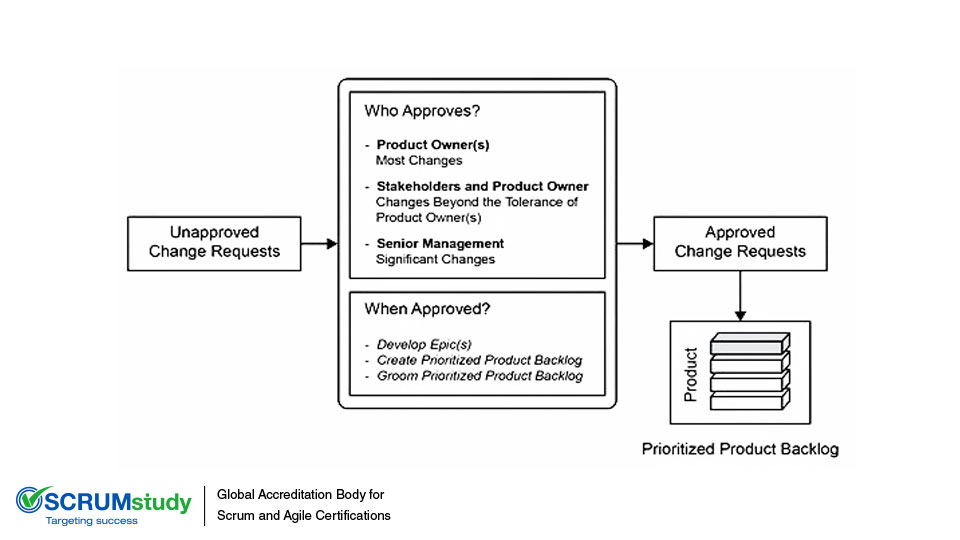How to Handle Request for Change or Change Requests in a Scrum Project?
Posted bySCRUMstudy® on December 26, 2022
Categories Project Delivery SBOK® Guide Scaling Scrum Scrum
Request for changes are usually submitted as Change Requests. Change Requests remain unapproved until they get formally approved. The Scrum Guidance Body usually defines a process for approving and managing changes throughout the organization. In the absence of a formal process, it is recommended that small changes that do not have a significant impact on the project be directly approved by the Product Owner. The tolerance for such small changes could be defined at an organizational level or by the sponsor for a particular project. In most projects, 90% of Change Requests could be classified as small changes that should be approved by the Product Owner. So, the Product Owner plays a very important role in managing changes in a Scrum Project.
Changes that are beyond the tolerance level of the Product Owner may need approval from relevant business stakeholders working with the Product Owner. At times, if a requested change could have a substantial impact on the project or organization, approval from senior management (e.g., Executive Sponsor, Portfolio Product Owner, Program Product Owner, or Chief Product Owner) may be required.
Change Requests for the project are discussed and approved during the Develop Epic(s), Create Prioritized Product Backlog, and Refine Prioritized Product Backlog processes. Approved Change Requests are then prioritized along with other product requirements and their respective User Stories and then incorporated into the Prioritized Product Backlog.
So, to conclude it can be said that Scrum development projects welcome change by using small development cycles that incorporate customer feedback on the project’s deliverables after each Sprint. This enables the customer to regularly interact with the Scrum Team members, view product increments as they are ready, and change requirements earlier on in the development cycle. Also, the portfolio or program management teams can respond to Change Requests pertaining to Scrum projects applicable at their level.

